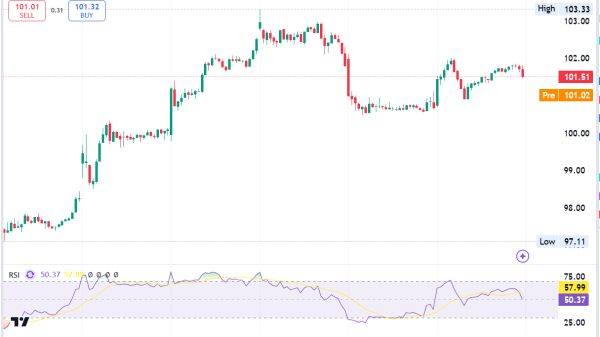Dollar Dips from 3-Month High, Yields Add Pressure
The U.S dollar falls from near three-month high against the euro, down 0.16% to $1.0772.
U.S. dollar index drops slightly to 104.04, reflecting pressure from declining bond yields.
Sterling gains against the dollar, with higher British house prices influencing market dynamics.
The U.S. dollar saw a decline from its nearly three-month peak against the euro on Wednesday. The movement was due to a combination of technical pullbacks and a drop in U.S. bond yields. Despite the dollar’s recent surge, fueled by unexpectedly strong U.S. jobs data and hawkish remarks from Federal Reserve Chair Jerome Powell, this downward shift tempers the expectations for an imminent interest rate cut. The dollar fell to $1.0772 per euro, representing a notable retreat from its robust performance earlier in the week.
U.S. Dollar Index Experiences a Slight Decline
In the currency markets, the U.S. dollar showed mixed reactions. It gained slightly against the yen but lost ground against a basket of currencies. This was reflected in the U.S. dollar index’s decrease to 104.04 from its recent highs. Thus highlighting the market’s responsiveness to changes in yields and economic signals. The market’s cautious approach is further influenced by the anticipation of upcoming U.S. inflation data and its potential implications for the Federal Reserve’s rate policies.
Sterling Gains Against the Dollar
The British pound appreciated by 0.27% to $1.2633 against the dollar, a rise supported by increasing house prices in the U.K. This has sparked speculation about the Bank of England’s forthcoming actions. Despite a significant drop in production, the euro’s stability indicates the market’s acclimatization to the persistent industrial challenges within the eurozone’s major economies.
As the financial community monitors U.S. inflation trends, the anticipation surrounding the Federal Reserve’s rate decisions remains paramount. The current market sentiment shows moderated expectations for rate reductions in March, reflecting a cautious optimism that may influence the dollar’s path in the upcoming weeks. With important economic indicators ahead, investors are keenly observing their potential effects on currency valuations and the broader interest rate environment.
The post Dollar Dips from 3-Month High, Yields Add Pressure appeared first on FinanceBrokerage.


































